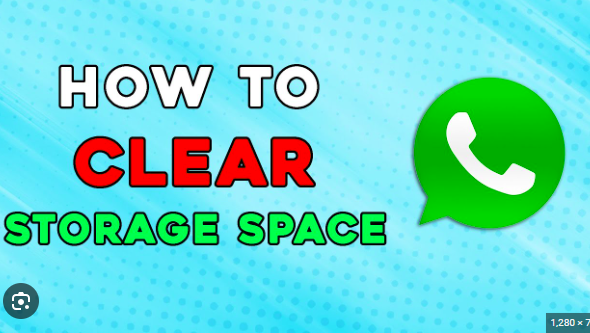Greetings, tech-savvy readers! Today, I’m here to tackle a common woe that plagues smartphone users globally – the ever-dwindling storage space on WhatsApp. As our chat histories, media files, and memes pile up, it’s easy to find ourselves facing the dreaded “Storage Almost Full” notification. But fear not! In this comprehensive guide, I’ll walk you through the art of managing your WhatsApp storage space like a pro.
Understanding WhatsApp Storage Basics
Before diving into the nitty-gritty, let’s understand how WhatsApp consumes storage on your device. WhatsApp stores various types of data, including text messages, images, videos, voice messages, documents, and more. Over time, this data accumulates and occupies valuable space on your phone.
H2: Decoding WhatsApp’s Storage Metrics
The first step in optimizing your WhatsApp storage is deciphering the app’s storage metrics. Head to the ‘Settings’ menu within WhatsApp, tap on ‘Storage and Data,’ and then ‘Manage Storage.’ Here, you’ll find a detailed breakdown of the storage consumed by each chat and media type.
Clearing Chat Histories Strategically
Now that you’ve identified the storage hogs, it’s time to declutter your chat histories. But wait, before you hit the delete button like a digital Marie Kondo, let’s approach this strategically.
H2: Deleting Unnecessary Chats
Review your chat list and identify conversations that are no longer relevant. Whether it’s an old group chat or a one-on-one conversation that has served its purpose, bid them farewell. Delete these chats by long-pressing on the chat, selecting ‘Delete,’ and choosing whether to delete just the chat or the chat and media.
H3: Taming the Media Monster
While it’s tempting to keep every photo and video shared, it’s also a surefire way to fill up your storage. Consider going through your media gallery within a chat and deleting files you no longer need. WhatsApp conveniently categorizes media by type, making it easier to sift through.
Mastering Media Auto-Download Settings
WhatsApp’s default settings might be the culprit behind your storage struggles. Take control by customizing the auto-download settings based on your preferences.
H2: Configuring Media Auto-Download
Navigate to ‘Settings,’ select ‘Storage and Data,’ and then ‘Media Auto-Download.’ Here, you can specify the media types you want to download automatically over cellular data, Wi-Fi, or when roaming. By tweaking these settings, you’ll prevent WhatsApp from mindlessly downloading every cat video that graces your chat.
Utilizing the ‘Storage Usage’ Feature Wisely
WhatsApp offers a nifty feature called ‘Storage Usage,’ allowing you to see which chats and media types consume the most space.
H2: Analyzing Storage Usage
Head to ‘Settings,’ tap on ‘Storage and Data,’ and select ‘Storage Usage.’ Here, you’ll see a list of your chats sorted by the amount of storage they occupy. This insight empowers you to target specific chats for cleanup, ensuring maximum impact on your storage space.
Regularly Backing Up and Clearing Conversations
Backing up your chats is essential, but the backups themselves can become storage hogs. Manage your backups efficiently to strike a balance between data preservation and storage optimization.
H2: Streamlining Backups
WhatsApp offers various backup options, including local backups and backups to cloud services like Google Drive or iCloud. Regularly review your backup settings and choose a frequency that aligns with your data retention needs. Consider storing backups in the cloud to free up local storage on your device.
H3: Deleting Redundant Backups
Over time, your cloud storage might accumulate multiple backups. Periodically check and delete redundant backups to prevent them from occupying unnecessary space. Be cautious, though – ensure you have a recent backup before hitting the delete button.
Managing Large Media Files Effectively
High-resolution photos and lengthy videos can quickly become space guzzlers. It’s time to optimize them without compromising quality.
H2: Compressing Images and Videos
WhatsApp allows you to compress images and videos before sending them. Leverage this feature not only for outgoing media but also for your existing gallery. Open a chat, select the media you want to compress, tap the share button, and choose the ‘Document’ option. This reduces the file size without compromising the quality excessively.
H3: Using Third-Party Apps for Compression
For a more comprehensive approach, consider using third-party apps designed to compress images and videos. Apps like ‘Photo Compress & Resize’ for images or ‘Video Compressor’ for videos can significantly reduce file sizes, freeing up valuable storage space.
Wrapping Up the Storage Optimization Journey
Congratulations! You’ve now mastered the art of managing your WhatsApp storage space. By strategically deleting unnecessary data, configuring auto-download settings, utilizing storage insights, and optimizing large media files, you’ve reclaimed valuable storage real estate on your device.
Remember, maintaining a clutter-free WhatsApp doesn’t just optimize storage; it also enhances your app’s performance. Implement these strategies regularly, and you’ll never again be haunted by the looming specter of insufficient storage space.
Here’s to a streamlined and efficient WhatsApp experience! Until next time, happy optimizing!
